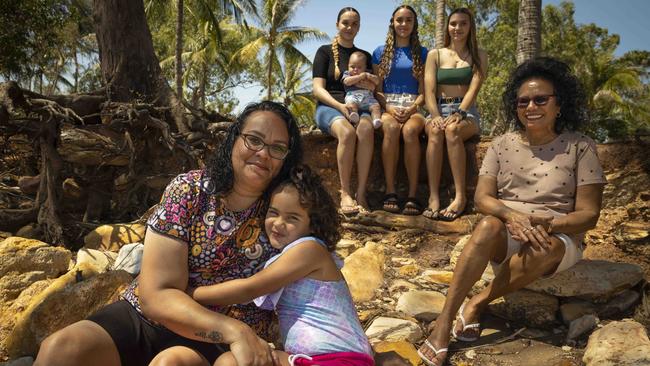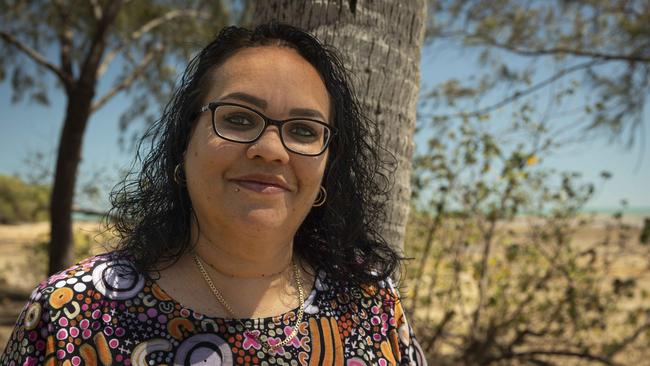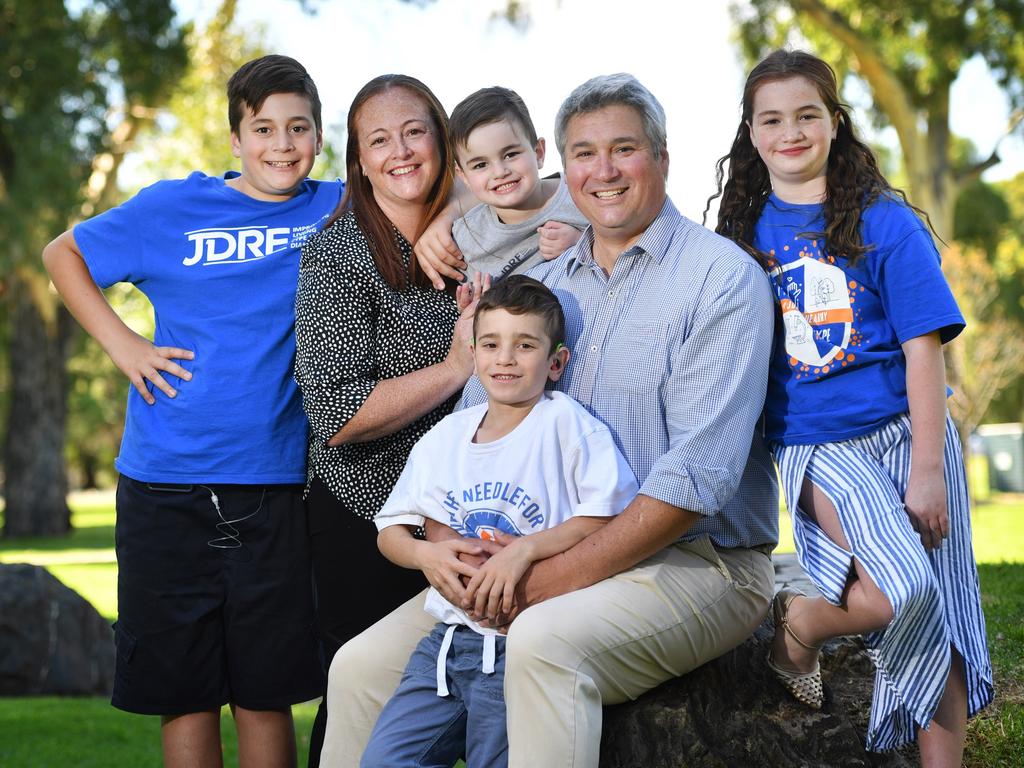Children as young as four have been diagnosed with Type 2 diabetes as doctors raise alarm at ’exponential trend’
Doctors are pleading for national intervention to stem rising Type 2 diabetes diagnoses in children, warning some can expect end-stage renal failure by 30.

Doctors have issued an urgent plea for national intervention to stem the rising tide of Type 2 diabetes diagnoses in children and young people, warning patients are suffering heart attacks as young as 25 and some are expected to reach end-stage renal failure by the age of 30.
The medics have revealed Type 2 diabetes has been diagnosed in children as young as the age of four in northern Australia in what they describe as an “exponential trend” of increase in the disease in young people on a scale which has never been seen before anywhere in the world.
Clinicians have only recently begun to track cases of Type 2 diabetes – a condition traditionally only seen in midlife – in children and those under 24 after becoming concerned at the younger and younger ages of their patients.
They have established that one in 150 people in northern Australia aged between 15 and 24 has Type 2 diabetes – 10 times higher than previously reported.
The number is highest in central Australia where one in 70 people in that age bracket has the disease. Actual rates are likely to be significantly higher as many cases remain undiagnosed.
The exact numbers of children aged under 18 with Type 2 diabetes have never been published. But paediatric endocrinologists in Darwin report that their patient list has increased 20-fold in the past five years to over 100 children including “quite a few” aged under seven and one aged four years old, with a new case of Type 2 diabetes now diagnosed in a child aged under 18 approximately every week.
“To our knowledge these are the highest rates reported in the world,” said Professor Louise Maple-Brown, deputy director of research at Menzies School of Health Research and a senior endocrinologist at the Royal Darwin Hospital. “They are extraordinarily high.”
Figures collated by Diabetes Australia indicate there are now 1155 children and young people living with Type 2 diabetes, an 18.3 per cent increase in the past decade, while among those aged under 30, the increase in incidence has been 37 per cent since 2012.
A federal standing parliamentary committee on health is currently holding an inquiry into diabetes, with a public hearing due to be held on Monday in Campbelltown in Western Sydney.

Labor MP Mike Freelander, the chair of the committee and a paediatrician, said the growing trend of intergenerational diabetes would be a focus of the inquiry.
“I’m very, very worried about the paediatric space,” Dr Freelander said. “I’m worried that I’m seeing young kids with insulin resistance and Type 2 diabetes that we never used to see.
“We’ve seen this trend emerging for a couple of decades but the problem now is the numbers, and they really are ramping up. We must reverse this trend otherwise we are condemning a generation to worse health outcomes and reduced life expectancy.”
Type 2 diabetes is more aggressive and severe in younger people, carrying a much higher risk of complications. If diagnosed at 10 years old, 80 per cent of patients will have severe comorbidities by the age of 25 and half will be on renal dialysis, according to published research.
Yet in the NT, there is not one publicly funded diabetes prevention program.
“I think going forward if we don’t intervene, it’s a tragedy that is happening, because we’re losing these young people that have so much to give, that are going to have their lifespans cut short from diabetes,” says Angela Titmuss, senior research fellow at Menzies School of Health Research and a paediatric endocrinologist at the Royal Darwin Hospital.
“We have to act.’’ Dr Titmuss said.
“When I started in the NT in 2017 I was doing visiting clinics, and I remember five young people aged under 18 with Type 2 diabetes on my list, we diagnosed a few cases a year. Now I personally have been involved in the care of over 100 young people under 18.
“The rates we are seeing are higher than has been reported anywhere in the world in the last 25 years.
“I really worry about the trajectory for these young people. The disease is much more aggressive. The prognosis is worse. It doesn’t respond to medications as well.
“These young people live in overcrowded houses is food insecurity, educational disadvantage, there‘s issues about access to health care,” Dr Titmuss said.
Type 2 diabetes already affects 1.5 million Australians and is strongly related to high rates of overweight and obesity.
Prevalence has increased 72.5 per cent from 2000 to 2020. But the emerging intergenerational nature of the disease – connected to rapidly growing rates of gestational diabetes and epigenetic changes – means it is now affecting younger and younger age groups. Children born to women with diabetes have an increased risk of youth-onset diabetes.
Sian Graham is a senior research officer and Chair of the Aboriginal and Torres Strait Islander Advisory Group for the Diabetes Across the Life Course: Northern Australian Partnership, aimed at improving maternal and child health in the critical first 2000 days and breaking the cycle of intergenerational diabetes.
Ms Graham was diagnosed with Type 2 diabetes herself at 30 years old after having earlier experienced gestational diabetes. She now worries for the future elevated diabetes risk for her daughter, Takaia, now aged four.
“It’s like a time bomb, you’re just waiting, it’s a constant worry,” Ms Graham says.
Ms Graham said the Menzies program is make huge strides in educating families about diabetes and intervening early, but the reality is that combating the devastating intergenerational diabetes trend is not possible at the level of individuals or small organisations.
Many local Aboriginal health services were doing a brilliant job, but system-wide preventative health interventions and education were desperately needed.
“I think it’s so important that we start addressing this situation now at a national level because I think we’re in crisis,” Ms Graham said. “We’re only seeing the tip of the iceberg now. We are going to see a dialysis epidemic in the years to come, we’re going to see younger and younger people on chairs if we don’t take action.
“It actually scares the living daylights out of me. This is our reality and this is the pathway that we’re on if we don’t take action. We need funding. We need resources. We need more focus on education and prevention.”
Director of the Australian Centre for Accelerating Diabetes Innovation at the University of Melbourne, endocrinologist Elif Ekinci, said diabetes complications including kidney failure, amputations, blindness and cardiovascular disease were already costing the nation billions.
“At the moment diabetes and its complications are a silent crisis, devastating lives and overwhelming our healthcare sector,” Dr Ekinci said.
A submission by the Royal Australian College of Physicians to the diabetes inquiry called for urgent funding for preventative health. Australia has a National Preventive Health Strategy but it is not fully costed.
The amount spent by governments on the management of preventable diseases and subsidies for pharmaceuticals eclipses that spent on prevention by orders of magnitude. It’s estimated governments spend $38 billion per year on the management of preventable diseases.
Senior research fellow at the Telethon Kids Institute in WA, Aveni Haynes, agreed funding for prevention is critical but there is also a lack of resourcing for appropriate treatment and early screening.
“You really need to screen these young people at diagnosis, because a significant proportion have already got high blood pressure, they’ve already got fatty liver, they’ve already got high cholesterol,” Dr Hayes said.





